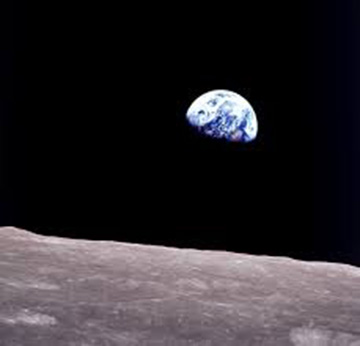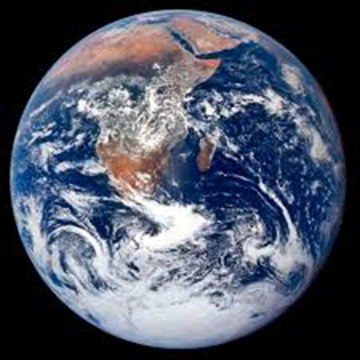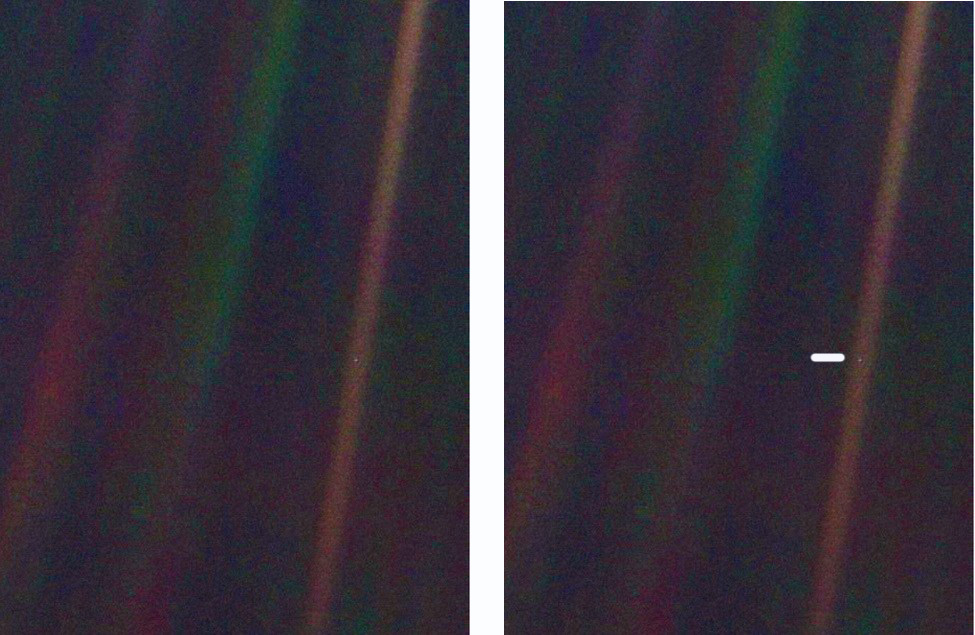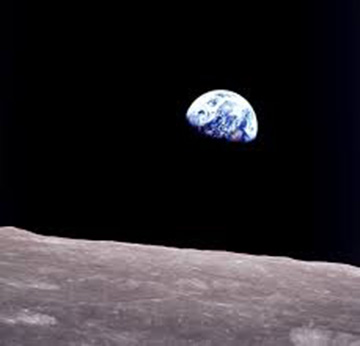
There are three NASA photographs that seem central in shaping and reshaping our consciousness, philosophy and reality regarding our interactions with each other, with other species, and with the planet as well as our role in the universe.
They are Earthrise, the Blue Marble, and the Pale Blue Dot. The Blue Marble is probably the most familiar of the three.

I frequently use the Blue Marble in my courses and speaking engagements to put the topics in a planetary context, and to remind the listeners of what “home” looks like. I had the opportunity to hear Artist-Astronaut / Astronaut-Artist Nicole Stott speak of her time in space. She spoke of the 3 take-aways she had from those experiences:
That we live on a Planet,
That we are Earthlings,
and the Thin Blue Line.
It is easy to forget that we live on a Planet. In our daily lives there is nothing in our regular perspectives that remind us of that fact. Our mental construct is that we live in a place that can be identified by its address. We work in place or go to school in a place that can be identified by its address. If asked where we live our answers generally fall into one of two categories. If traveling, we generally answer the question with a place name – the city or town where we live, or say we live near a larger metropolitan area that may have more global recognition. If we are in our home region when asked, we generally say ‘over on ____” or “near ____”.
What we don’t say is “Planet Earth”. Planet Earth unites us. The other answers separate us.
We are all Earthlings. When I heard that “ah-ha” moment, it gave me a new and broader perspective on how to talk about a range of issues. Because yes, we are all Earthlings. If we live on Earth, we are an Earthling. So whether you are a person, a Golden Retriever, a Barred Owl, a goldfish or any other living thing on Earth, you are an Earthling. That understanding could be, should be, the central precept to guide our interactions with each other and other species.
For, in the final analysis, our most basic common link is that we all inhabit this planet. We all breathe the same air. We all cherish our children’s future. And we are all mortal.
President John F. Kennedy, American University, June 10, 1963
Nicole’s reference to the Thin Blue Line is a critical reminder that our atmosphere is what protects and shields us from the ravages of outer space. We should protect it and guard it with our lives, for without it, we, the current Earthlings, cannot exist. Whether in space or at sea or as Earthlings, thoughtlessly or accidentally poking holes in the hull of the vessel is never a good idea.
Pale Blue Dot

The Pale Blue Dot has a different message. To me it speaks of both the isolation and the independence of Planet Earth. It is the image of a lifeboat. What we have on board is all that we have to work with and the management of those precious resources determines our quality of life and degree to which we survive or thrive or fail.
The Pale Blue Dot also reminds us of Earth’s uniqueness in the known universe.
Earthrise though is the most important of the three, at least to me.

In one image it tells the whole story. It is the contrast of the barren lunar landscape in the foreground with the brightness of the Earth in the distance coupled with the vast dark emptiness of the background that gives us the critical perspective we need to keep in mind. Even our closest celestial neighbor is hostile to us and cannot provide us sanctuary. There is no place we can go in our solar system, and no place currently known to us in the galaxy or universe where we could arrive, open the hatch and survive.
We have one home. And we are there. And it is majestic and beautiful and generous and will continue to be so provided Humans learn they are Earthlings and act as such. Because in our hearts we know, as Dorothy learned,
There’s no place like home.
Tim 26 Dec. 2018
